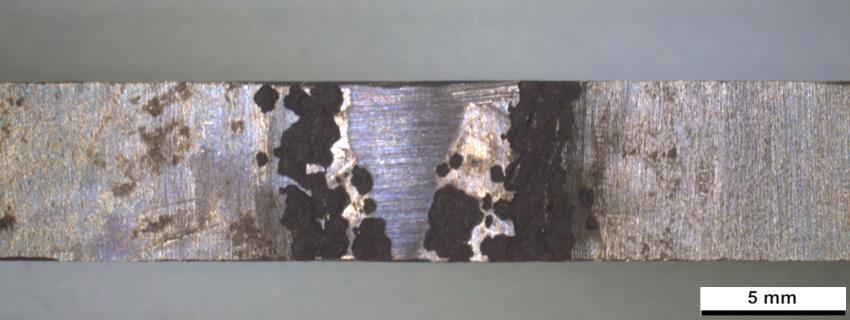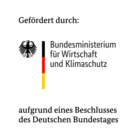20854 N

| Laufzeit: | 01.10.2019 - 31.03.2023 |
|---|---|
| Geldgeber: | Bundesministerium für Wirtschaft und Klimaschutz über AiF |
| Bearbeiter: | Dr. Clara Schlereth |
| Abteilung: | Materialien und Korrosion |
| Team: | Hochtemperaturlegierungen |
Plants for the production of synthesis gas, but also other process industries, work with gas mixtures of CO, CO2, CH4, H2, and water vapor at high temperatures. Here, metal dusting is a well-known phenomenon. In this corrosion process carbon is deposited from the gas phase onto the metal surface of the plant components. Graphite forms and accumulates at the grain boundaries of the metal. The graphite growth disrupts the internal cohesion of the metal and small particles are separated from the material. Hence, “metal dust” and high amounts of graphite are formed. The rapid attack of metal dusting poses an unpredictable risk for the plant operator. Even though a vast number of studies have been dedicated to metal dusting, some key aspects of the mechanism as well as cost-effective methods to protect the components are still under discussion.
In the first part of this project, a selection of common and new alloys for metal dusting environments are tested in different gas compositions at elevated pressure. Previous projects have shown that metal dusting attack is more rapid at elevated pressure. The purpose of these experiments is to evaluate the resistance of the different alloys against metal dusting. Additionally, a testing method with the most aggressive conditions is developed to shorten the time of future metal dusting tests.
In the second part of the project, weldings of different alloys are examined. The changes in the microstructure and local composition introduced by the welding process can serve as a starting point for metal dusting. The influence of different surface treatments of weldings such as brushing, grinding, and sandblasting are studied. An additional protection of the welding can be achieved by on-site aluminization. Here, a diffusion coating is applied locally by slurry deposition and subsequent heat treatment. All experiments are accompanied by detailed analysis of the surface and microstructure to gain a better insight into the mechanism of metal dusting.
zurück
Das IGF-Vorhaben Nr. 20854 N der Forschungsvereinigung DECHEMA e.V., Theodor-Heuss-Allee 25, 60486 Frankfurt am Main wurde über die AiF im Rahmen des Programms zur Förderung der industriellen Gemeinschaftsforschung (IGF) vom Bundesministerium für Wirtschaft und Klimaschutz aufgrund eines Beschlusses des Deutschen Bundestages gefördert.
Dr. Clara Schlereth
Tel.: 069 / 7564-479
E-Mail: clara.schlereth
Abschlussbericht (pdf, 3,8 MB)
C. Schlereth, E.M.H. White, M.C. Galetz, Nitrogen+Syngas July/August 2024
C. Schlereth, M. Weiser, E. White, P. Felfer, M.C. Galetz, Journal of Materials Science (2024)
C. Schlereth, M. Weiser, E. White, P. Felfer, M.C. Galetz, Journal of Materials Science (2024)
C. Schlereth, E.M.H. White, M. Lepple, B. Nowak, H. Hattendorf, M.C. Galetz, Materials and Corrosion (2023)
C. Schlereth, K. Hack, M.C. Galetz, Corrosion Science 206 (2022)